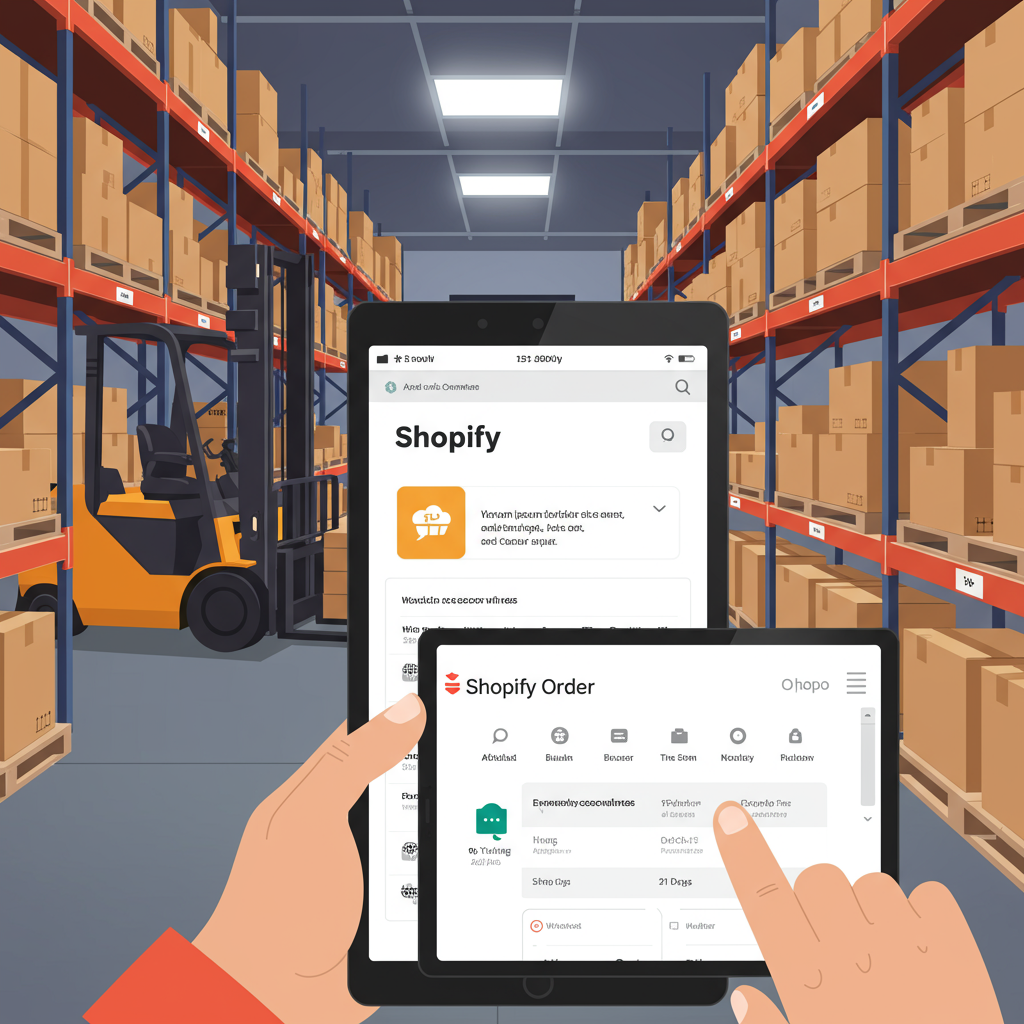From Overwhelmed to Optimized: How I Found the Right Logistics Partner to Scale My E-commerce Business
As a Shopify merchant, I know firsthand the exhilarating rush of a successful product launch, the satisfaction of a growing customer base, and the sheer terror of a sudden surge in orders.
Initially, I handled all my fulfillment myself. My spare room became a mini-warehouse, my evenings were spent packing boxes, and my weekends were dedicated to post office runs.
It was manageable at first, but as my business grew, I quickly hit a wall. The time spent on logistics was taking away from product development, marketing, and customer engagement – the core activities that actually grow a business.
That’s when I realized I needed help. I started looking into Third-Party Logistics, or 3PLs, and it was a game-changer for my Shopify store.
A 3PL is essentially an outsourced partner that handles all aspects of your supply chain, from warehousing and inventory management to order fulfillment, shipping, and even returns.
For Shopify store owners like us, partnering with a 3PL isn’t just about offloading tasks; it’s about unlocking scalability and efficiency.
One of the biggest benefits I experienced was significant cost savings. 3PLs operate on economies of scale, meaning they get better shipping rates and can manage warehouse space more efficiently than I ever could.
This allowed me to offer competitive shipping options to my customers, which is crucial in today’s e-commerce landscape.
Beyond cost, the time savings were immense. Delegating fulfillment freed me up to focus on strategic growth initiatives, like sourcing new products, optimizing my website, and building my brand.
Scalability became a non-issue. During peak seasons or flash sales, I no longer worried about my ability to handle the volume. My 3PL partner had the infrastructure and staff to manage it seamlessly.
They also brought a level of expertise I simply didn’t possess. From navigating complex international shipping regulations to optimizing packaging, their knowledge was invaluable.
Ultimately, this translated into improved customer satisfaction. Faster, more reliable shipping and professional packaging made my customers happier, leading to repeat business and positive reviews.
So, how do you choose the right 3PL for your Shopify store? It’s a critical decision, and I learned a lot through my own vetting process.
First and foremost, seamless integration with Shopify is non-negotiable. Your 3PL’s system needs to communicate effortlessly with your store for real-time order syncing, inventory updates, and tracking information.
Consider their location and network. Do they have warehouses strategically placed to reach your customer base quickly and cost-effectively? Multiple locations can significantly reduce transit times.
Pricing structure is another key factor. Be wary of hidden fees. I looked for transparent pricing that clearly outlined costs for storage, pick and pack, shipping, and any additional services.
Technology and software capabilities are vital. A robust Warehouse Management System (WMS) that provides real-time inventory visibility, order tracking, and detailed reporting is essential.
Don’t underestimate the importance of customer service and communication. You need a responsive partner who can address issues quickly and provide clear updates. A dedicated account manager is a huge plus.
Think about specialization. If you sell fragile items, oversized products, or require cold storage, ensure the 3PL has experience and facilities to handle your specific needs.
Their ability to scale with your business is paramount. Can they handle your current volume, and more importantly, can they accommodate your projected growth without issues?
Efficient return management is often overlooked but incredibly important. A good 3PL will have a streamlined process for handling returns, ensuring customer satisfaction even when things don’t go as planned.
Finally, check their reputation and reviews. What do other Shopify merchants say about their experience? Look for case studies or testimonials relevant to your business size and industry.
Based on my research and experience, here are a few top 3PL services that often come up as excellent choices for Shopify stores.
ShipBob is a popular choice, known for its robust technology and extensive network of fulfillment centers. Their platform integrates deeply with Shopify, offering great visibility and control.
Deliverr, now part of the Shopify Fulfillment Network, focuses on fast shipping and transparent, all-inclusive pricing. If speed to customer is your top priority, they are definitely worth considering.
ShipHero offers a powerful software-driven solution, suitable for growing brands with higher order volumes. They provide flexibility and strong inventory management features.
Red Stag Fulfillment specializes in handling oversized, high-value, or fragile items with exceptional accuracy. If your products require extra care, they are a strong contender.
Whitebox provides an end-to-end solution that goes beyond just fulfillment, offering services like marketing and analytics, which can be appealing for brands looking for a more comprehensive partner.
My process for vetting involved defining my exact needs, requesting detailed quotes from several providers, and asking very specific questions about their Shopify integration, SLAs, and potential hidden fees.
I also made sure to check references and, if possible, started with a smaller inventory transfer to test the waters before fully committing.
Common pitfalls I learned to avoid include not fully understanding the pricing structure, poor communication from the 3PL, and a lack of seamless integration that causes manual workarounds.
The transition process itself requires careful planning: transferring inventory, setting up system integrations, and thoroughly testing the order flow before going live.
Ultimately, partnering with the right 3PL has been one of the best decisions I’ve made for my Shopify store. It’s allowed me to reclaim my time, reduce stress, and focus on what I love: growing my brand.
It’s an investment that pays dividends in efficiency, customer satisfaction, and peace of mind. If you’re feeling overwhelmed by fulfillment, I highly recommend exploring these options.
What are your thoughts on this guide, and what challenges have you faced with fulfillment in your own Shopify journey?






